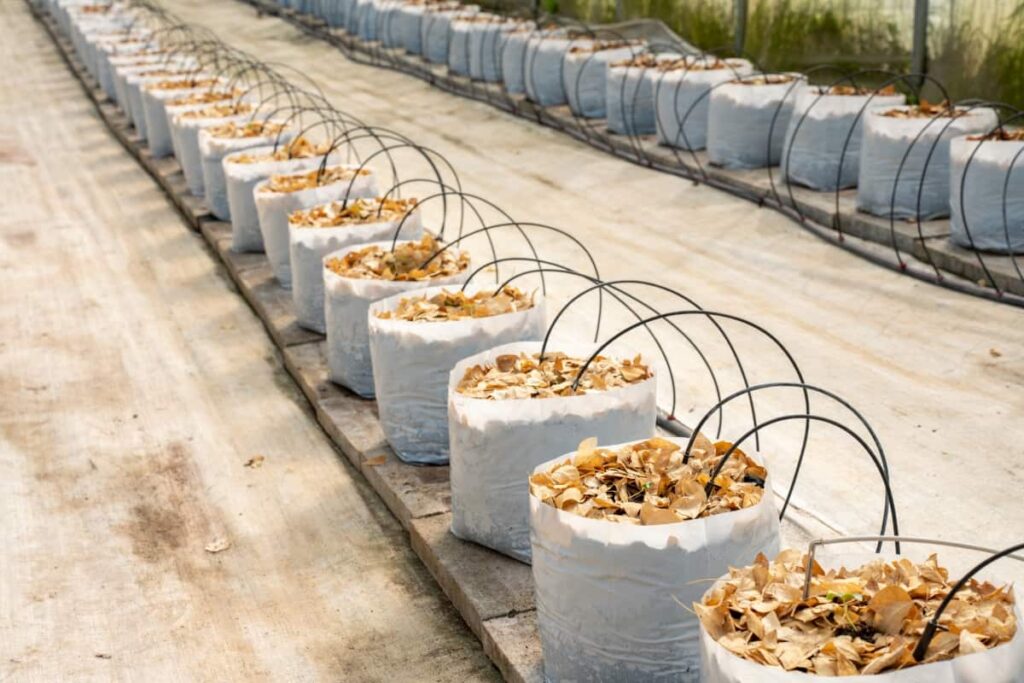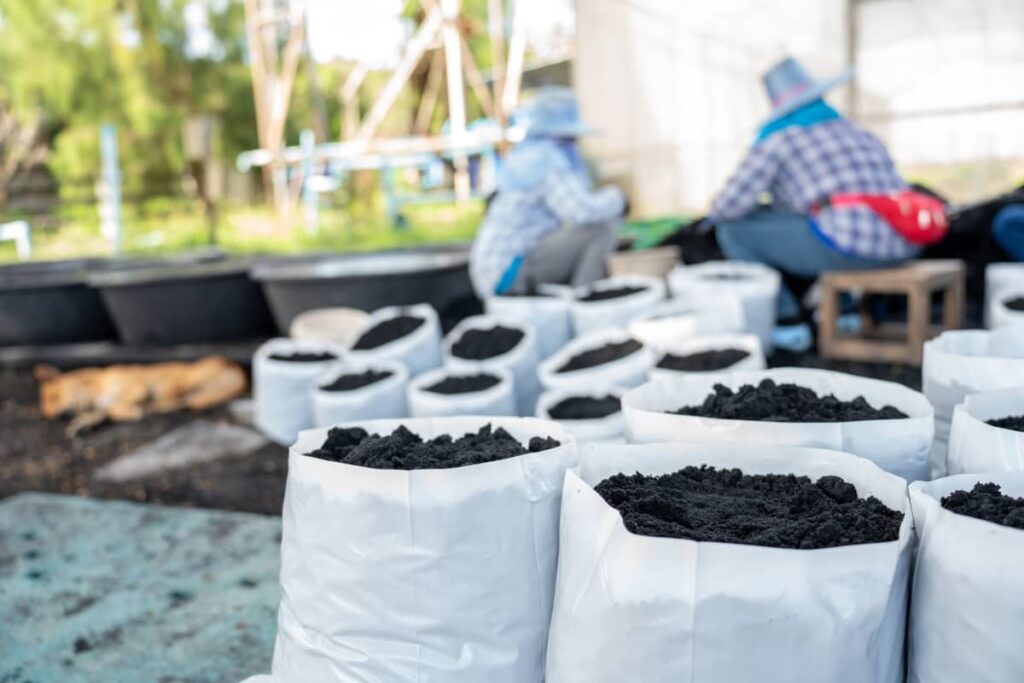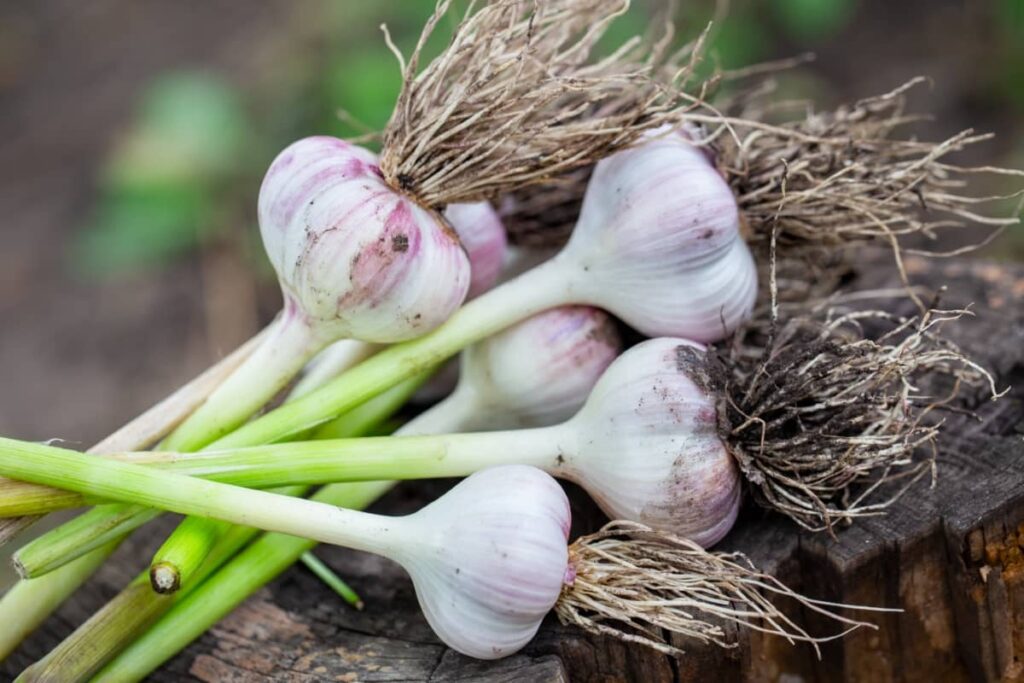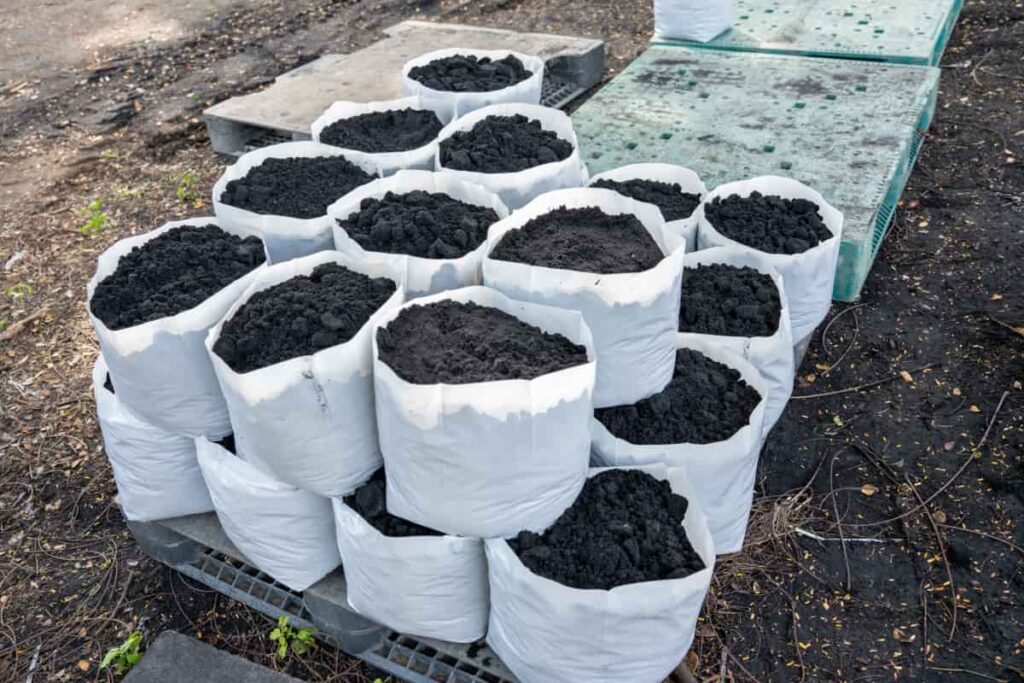Garlic is a versatile and essential crop in many kitchens, and growing it in grow bags offers several benefits. Using grow bags for garlic cultivation provides better control over soil conditions, excellent drainage, and space efficiency, making it an ideal option for urban or limited-space gardening. Whether you’re a seasoned gardener or a beginner, this guide will walk you through the process step by step, ensuring a successful Garlic cultivation in grow bags.
Benefits of Planting Garlic in Grow Bags
- Space Efficiency: Garlic grow bags maximize space utilization, making them ideal for small gardens, balconies, or areas with limited space.
- Better Drainage: Grow bags typically have superior drainage compared to traditional pots, reducing the risk of waterlogging and root rot.
- Portability: Garlic cloves grow bags are less weight and portable, allowing for easy relocation to optimize sunlight exposure.
- Temperature Regulation: The fabric material of grow bags helps regulate soil temperature, preventing overheating in hot weather and providing insulation in colder climates.
Selecting the Right Garlic Varieties for Grow Bags
When choosing garlic varieties for grow bags, opt for those suited to container gardening. Look for softneck varieties like ‘California Early’ or ‘Inchelium Red,’ or hardneck varieties like ‘Music’ or ‘Chesnok Red.’ These varieties are known to perform well in confined spaces and are more adaptable to the conditions of grow bags. Ensure the selected varieties have a reputation for producing satisfactory yields and flavor in container environments.

Choosing Your Grow Bags: Grow Bags For Garlic Planting
Size and Material Considerations for Garlic
- Size: For grow bag gardening garlic, Opt for grow bags with at least 5 gallons capacity to provide ample space for garlic root development.
- Material: As organic garlic growing bags, select breathable fabric to grow bags made from materials like felt, fabric, or burlap, which promote air circulation and root health.
Drainage Importance for Garlic Grow Bags
Grow bags with good drainage prevent water from pooling at the bottom, ensuring that the soil remains aerated and healthy. This promotes robust root development and prevents fungal diseases. Adequate drainage also allows excess salts to leach out of the soil, preventing salt buildup, which can harm garlic plants. Ensure that the grow bags have sufficient drainage holes at the bottom to provide an excess water escape and promote healthy root growth.
Soil and Compost Mix for Garlic
Preparing the Ideal Soil Mix
- Best soil for garlic in bags: Use a well-draining, loam-based potting mix as the base for your garlic grow bags.
- Compost Addition: Incorporate compost or aged manure into the soil mix to enrich it with organic matter and nutrients.
Nutrient Requirements for Optimal Garlic Growth
- Nitrogen: Garlic requires nitrogen for leafy growth, so ensure the soil mix contains sufficient nitrogen, either from compost or a balanced fertilizer.
- Phosphorus and Potassium: Provide phosphorus and potassium for root development and bulb formation, either through a balanced fertilizer or by incorporating bone meal or rock phosphate into the soil mix.
Planting Garlic Cloves
Timing: When to Plant Garlic in Grow Bags
For grow bag cultivation of garlic, plant cloves in late fall for a spring harvest or in early spring for a summer harvest. Timing is crucial for successful growth, ensuring cloves establish roots before winter dormancy or thrive in milder spring conditions. Aim for soil temperatures around 10°C to encourage root development.
Planting Depth and Spacing for Garlic
- Depth: Plant garlic cloves with the pointed end facing upward at 1-2 inches depth in the soil mix.
- Spacing: Space garlic cloves 4-6 inches apart within the grow bag to allow sufficient room for bulb expansion.
In case you missed it: Garlic Cultivation Information Guide

Watering and Moisture Management
Watering Frequency for Garlic in Grow Bags
- Consistent Moisture: For Watering garlic in grow bags, consistently maintain the soil moist but not soggy, especially during the active growth stages.
- Watering Schedule: Water garlic plants whenever the top soil is dry, typically every 2-3 days, depending on environmental conditions.
Avoiding Waterlogging: Tips for Healthy Garlic
- Elevate the bags slightly to prevent water from pooling at the bottom. Water garlic plants only when the top inch of soil feels dry, maintaining consistent moisture levels.
- Proper Drainage: Ensure adequate drainage in grow bags to prevent water pooling, which can cause root rot and stunted growth.
- Mulching: Apply a layer of mulch with organic materials, like straw or shredded leaves, to retain moisture while preventing excessive evaporation and water runoff.
Fertilization Strategy
Choosing the Right Fertilizer for Garlic
- Balanced Fertilizer: For maximizing garlic yield in bags, use a fertilizer with NPK ratio of 10-10-10 or similar, containing equal proportions of nitrogen, phosphorus, and potassium.
- Organic Options: Alternatively, incorporate organic fertilizers such as compost, fish emulsion, or seaweed extract to provide a slow-release source of nutrients.
Fertilization Schedule to Boost Garlic Growth
- Pre-Planting: Mix in a balanced fertilizer or compost into the soil mix before planting garlic cloves in grow bags.
- Early Growth: Apply a side dressing of balanced fertilizer or compost around the base of garlic plants once they begin active growth, typically in early spring.
- Mid-Season Boost: Repeat fertilization every 4-6 weeks during the growing season to support vigorous foliage and bulb development.
Sunlight and Temperature Requirements
Ensuring Adequate Sunlight for Garlic
- Sun Exposure: Place grow bags in a location getting at least 6 hours of sunlight daily for optimal garlic growth and bulb formation.
- Sun Orientation: Orient grow bags in an east-west direction to maximize sunlight exposure throughout the day.
Managing Temperature for Garlic in Grow Bags
- Cool Conditions: Garlic prefers cool temperatures between 15-24°C during the growing season, making it well-suited for outdoor cultivation in most climates.
- Winter Protection: In colder regions, insulate grow bags with straw or fleece to protect garlic plants from frost damage during winter months.
In case you missed it: Maximizing Profit with a Comprehensive Garlic Farming Business Plan

Pest and Disease Management
Common Pests and Diseases Affecting Garlic
- Pests: Watch out for pests such as aphids, thrips, and onion maggots, which can damage garlic foliage and bulbs.
- Diseases: Garlic is susceptible to fungal diseases like white rot, rust, and fusarium, especially in poorly drained or waterlogged soil.
Organic Control Methods for Healthy Garlic
- Companion Planting: Interplant garlic with pest-repellent herbs like mint, basil, or rosemary to deter insect pests.
- Biological Controls: For Garlic pest control in bags, conserve parasitoids such as Ceranisus menes (nymph), etc. Conserve predators such as syrphid flies, minute pirate bugs/ anthocorid bugs, praying mantis, predatory thrips, damsel bugs, lacewings, coccinellids, spiders, etc.
- Crop Rotation: Rotate garlic with unrelated crops annually to reduce the diseases and pests risk.
Harvesting Garlic from Grow Bags
Signs that Garlic is Ready to Harvest
- Foliage Browning: Monitor garlic foliage for signs of yellowing and browning, indicating the onset of bulb maturity.
- Bulb Size: Check bulb size and feel for firmness to determine readiness for harvest; mature bulbs should have plump cloves and papery skins.
How to Harvest Garlic without Damaging Cloves
- Loosening Soil: Carefully loosen the soil around garlic bulbs using a garden fork or trowel to avoid damaging the bulbs or cloves.
- Lifting Bulbs: Gently lift garlic bulbs from the soil, shaking off excess dirt, and allow them to cure in a cool, dry, well-ventilated area for 2-3 weeks before storage.
In case you missed it: Garlic Cultivation Cost Per Acre in India: Exploring State-wise Average Production Costs

Conclusion
By following these comprehensive guidelines, you can successfully grow flavorful garlic in grow bags, whether you have limited space or are looking to maximize your garden’s productivity. Enjoy the satisfaction of harvesting your homegrown garlic and adding its distinctive flavor to your favorite dishes.
- Irrigation and Water Management in Pineapple Farming
- Blossom to Harvest: Mastering Flowering and Pollination in Papaya Farming
- Pig Fattening Essentials: From Selection to Sale for Beginners
- Raising Wagyu Cattle: A Complete Guide for Premium Beef Production
- Soil Types and Their Water Holding Capacity
- Optimizing Irrigation Schedules for Coconut Groves for Enhanced Yield
- Espresso Your Garden: Coffee Grounds for Healthier Acid-Loving Plants
- The Best Soil Mix for Snake Plants: How to Mix Your Own Snake Plant Soil
- Green Thumb Success: Expert Tips for Cultivating Greenhouse Beans All Year Round
